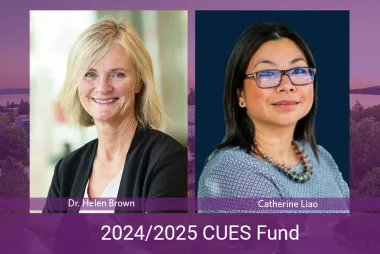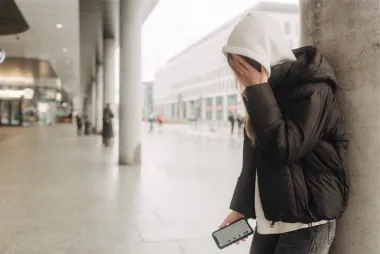Nurses are the future of health care. And we need more of them.


By Dr. Elizabeth Saewyc
Dr. Saewyc is the director of the UBC School of Nursing.
Two years ago the World Health Organization declared COVID-19 a pandemic. So much of our world has changed, and we'll never be the same again. But among all that is different, I know at least two things that were true before and will remain true. The first is that nurses are the future of health care. The second is that we need more of them.
The pandemic increased the visibility of nursing. People have learned so much about the challenges facing nurses each day. They learned about nurses' advocacy for appropriate personal protective equipment (PPE) in the early days of the pandemic. They've seen the long hours we work in the most challenging and complex circumstances. During each wave of the pandemic, people have thanked us, cheered for us, delivered meals and sent us encouraging messages. They voted in elections, showing support for more funding and resources for nursing.
Many people perhaps underestimated the complexity of nursing. Our profession attracts individuals with a commitment to social justice, and an ability to learn new skills and gain knowledge in a constantly changing environment. Nurses work in all areas of health care: at the point of care, in administrative leadership, policy and education. Our voice is needed to shape the future of health care during and post-pandemic.

The pandemic has also shown that we need more nurses. This isn't new — there has been a shortage for a number of years and it's getting worse. Pre-COVID we knew we needed more nurses, because of our aging population, increased rates of chronic conditions and rapidly developing technology in areas such as informatics requiring expert clinical support. Add a global pandemic and suddenly there is an even greater need for nurses.
I'm encouraged by the fact that so many people are stepping up and applying to our education programs, and that the Government of British Columbia is increasing the number of spaces in nursing programs across the province.
Typically, UBC Faculty of Applied Science receives 500 to 600 applications for our 120 School of Nursing undergraduate program places each year; however, this last year we received more than 850 applications — a 30 per cent increase. Given the increased visibility of nursing during the pandemic, applicants are even more aware of the complexity and unique role of nursing across the health care system. Our applicants show a strong commitment to making a difference in the world, and to helping people in a time of need. They know that nursing is a challenging but rewarding profession.

I'm pleased that our governments are helping in the effort to increase the number of nurses. This past spring, the BC Ministry of Health asked nursing schools across the province if we could add even just a few more spaces in our undergraduate programs. On short notice, we were able to increase our admissions for 2021-2022 by eight students. We're challenged by a need for more nursing faculty members and practicum placement opportunities, but UBC is committed to growing the number of nursing graduates in the years ahead.
We've had a shortage of nurses for a number of years before the pandemic. The situation is becoming dire. COVID-19 has magnified the pressure on nurses as the cornerstone of the health care system. It is testing the strength of our nurses, and the burden is taking its toll. We need the commitment of governments and health systems, and the dedication of nursing schools to sustain and replenish this valuable resource. In all that is changing, this constant remains: nursing expertise is crucial to the future of health care, and we need more nurses.
All images credit: Martin Dee



